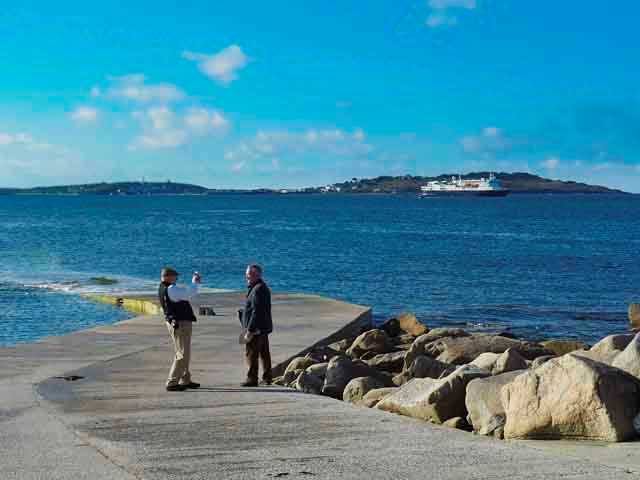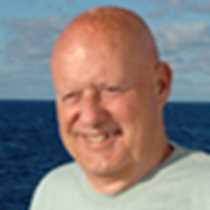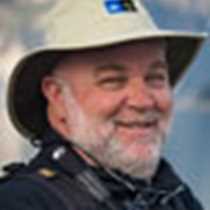Today we visited the remote and storied Isles of Scilly which lie off Land’s End in Corwall, in the extreme southwest of England. We began our day with a visit to Tresco Gardens on Tresco Island. These remarkable gardens display a magnificent array of plants from across the globe. For many years, especially during Victorian times, British sea captains brought plants from tropical and temperate regions around the world to thrive in the warm climate of Tresco, which is bathed by the waters of the North Atlantic Drift, the extension of the Gulf Stream. We were escorted through the gardens by the gardeners themselves who have all developed a strong dedication to cultivating the rich variety plants. One of the highlights of Tresco Garden is the display of beautifully restored figureheads recovered from ships that ran aground in the treacherous waters of the Isles over the centuries. In addition to our visit to the gardens, some of us took a nature walk along the lovely coastal cliffs where we had good looks at birds and also admired the beautiful white granite which makes up all the islands of the archipelago and provides the sand for the many small, shining beaches.
In the afternoon we visited the nearby island of St. Mary’s and the small capital village of Hughtown. Some of us strolled around the quaint village streets and others took another nature walk along the coast and out to the lighthouse at the end of the Penninis Peninsula. On returning to the ship in the late afternoon, we weighed anchor and sailed for Ireland. On the way we passed Bishop Rock at the end of the Western Rocks of Scilly. Bishop Rock marked the start of the competition for the fastest westward passage by the great ocean liners in the 20th century. The passage ended at the Ambrose lightship at Sandy Hook near New York and the prize, called the Blue Riband, is still held by the SS United States in 1952 with a time of three days, 12 hours, and 12 minutes. Nearby Gilstone Rock is also famous because it was on this rock that Admiral Sir Cloudesley Shovell wrecked his flagship, Association, and three other warships in 1707. This maritime disaster led to the formation of the Board of Longitude which offered a £20,000 prize, eventually awarded to John Harrison, for anyone who could figure out how to measure longitude at sea.
It was an altogether lovely day in the Isles of Scilly, filled with beautiful flowers, good weather, and lots of history.









